Tag: class 10 electricity notes
Class 10th Chapter 11 Science Notes for NCERT Students
Class 10th Chapter 11 Science: The Class 10 science chapter 11, titled ‘Electricity,’ explores the fundamental aspects of electricity. It seeks to unravel the nature of electricity, the factors influencing the flow of electric current, and the functioning of electric circuits.
Additionally, the chapter delves into the heating effects of electric current and explores its various practical applications. In our pursuit of comprehending electric current’s makeup, the chapter also delves into the discussion of atomic structure.
Class 10th Chapter 11 Science Notes for NCERT Students
Atomic Structure
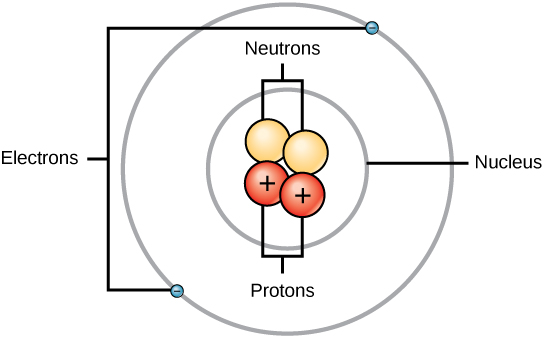
Within an atom, a positively charged nucleus is surrounded by negatively charged electrons that orbit around it. In metals, valence electrons are not tightly bound and are free to move within the conductor, forming an electric current.
Charge
Charge is an inherent characteristic of matter that enables it to exert electromagnetic force.
Conductors and Insulators: Class 10th Chapter 11 Science Notes
A conductor is a substance that allows current to flow through it with relatively little resistance, while an insulator is a substance that offers higher resistance to the flow of current. Copper, iron, and steel are examples of conductors, while glass, dry wood, and cotton are examples of insulators.
Electric Potential and Potential Difference
Electric potential at a point is characterized as the work required to bring a unit positive charge from infinity to that specific point. The potential difference between two points is the discrepancy in electric potentials at those locations. Electrons only move when there exists a difference in electric pressure, known as the potential difference. One Volt is defined as the energy consumption of one joule per electric charge of one coulomb.
Mathematically, the electric potential between two points can be expressed as:
V = W/Q
where V represents the potential difference, \(W\) stands for the work done, and \(Q\) denotes the electric charge.
Electric Current(I)
Electric current is the term used to describe the movement of electric charges. Mathematically, it is represented as I = Q/t, where I denotes the current, Q represents the electric charge, and t signifies the time taken for the charge to flow.
Models of Electric Current
Drift Velocity of Electron
Inside a metallic conductor, when an electric field is applied due to a potential difference, electrons attain an average velocity. This average velocity is known as the drift velocity.
Battery and Its Working
A cell acts as a source of potential difference, generated through internal chemical reactions within it.
At the anode: Cu(s) ⇌ Cu2+(aq) + 2e−
At the cathode: Ag(aq) + 2e− ⇌ 2Ag(s)
When multiple cells are combined, it forms a battery.
Electric Circuit
Electric Circuit and Circuit Diagram
An electric circuit refers to a closed-loop path through which a current flows. A circuit diagram is a visual representation of the electric circuit using symbols and lines.
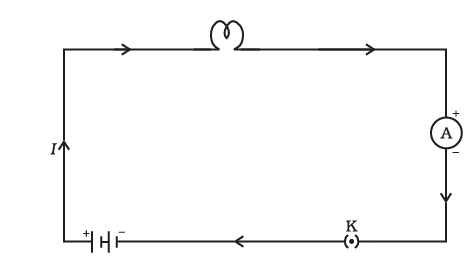
Resistance and Ohm’s Law
Ohm’s Law
Ohm’s Law establishes that the current passing through an ohmic conductor is directly proportional to the potential difference applied across its two ends. In other words, the relationship between the potential difference across the conductor and the current flowing through it is defined by Ohm’s Law.
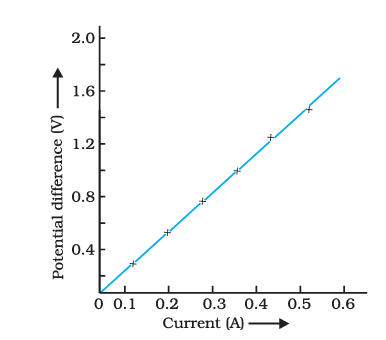
Resistance
Resistance quantifies the opposition presented to the flow of current within an electric circuit. It is expressed in ohms. Every material exhibits some degree of resistance to current flow. These materials can be broadly categorized into two groups: conductors and insulators. Conductors allow the flow of current with relatively low opposition, while insulators impede current flow to a greater extent.
Factors Affecting Resistance & How They Affect
Resistance is influenced by several factors:
- It is directly proportional to the length of the conductor.
- It is directly proportional to the nature of the conductor.
- It is directly proportional to the temperature of the conductor.
- It is inversely proportional to the cross-sectional area of the conductor.
Mathematically, this relationship is represented as:
Where is the resistance, (rho) is the resistivity of the material (a property related to the nature of the conductor), is the length of the conductor, and is the cross-sectional area of the conductor.
Resistivity
Resistivity refers to the electrical resistance exhibited by a substance with a length of one unit and a cross-sectional area of one unit.
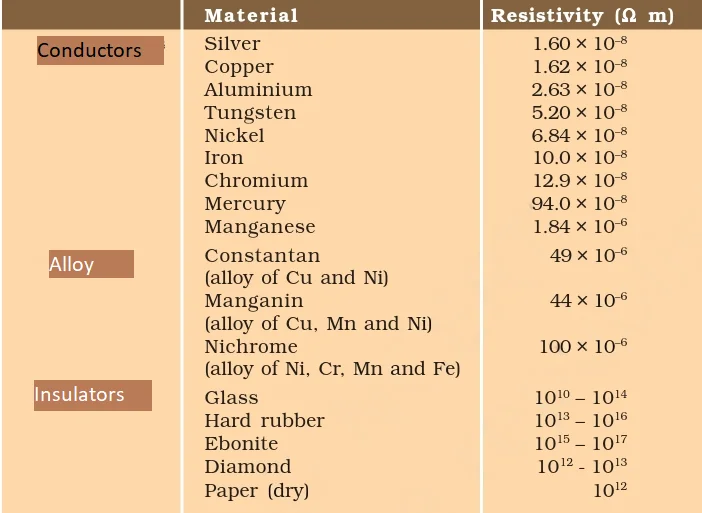
Ohmic and Non-Ohmic Resistors
Resistors that adhere to Ohm’s Law are termed Ohmic resistors, while those that deviate from it are known as Non-Ohmic resistors.
Superconductors
Superconductors are conductors that exhibit zero resistance to the flow of current. Prominent examples of superconductors include aluminum, niobium, magnesium diboride, as well as certain compounds known as cuprates, such as yttrium barium copper oxide and iron pnictides.
Combination of Resistors
Combination of Resistors
When two resistors are arranged in series, they carry the same current through them.
On the other hand, when two resistors are arranged in parallel, they experience the same potential difference applied across them.

Equivalent Resistance of a System of Resistors
The equivalent resistance of two resistors can be calculated as follows:
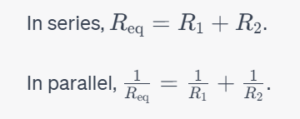
EMF and Terminal Voltage
EMF (Electromotive Force) refers to the potential difference between the two terminals of a cell when there is no current flowing through the circuit.
Terminal voltage, on the other hand, represents the potential difference between the two terminals of a cell when current is actively flowing through the circuit.
Electric Power and AC
Heating Effect of Current
Joule’s Law states the following relationships:
1. Heat (H) is directly proportional to the square of the current (I).
2. Heat (H) is directly proportional to the resistance of the given circuit.
3. Heat (H) is directly proportional to the time (t) for which the current flows through the conductor.
Moreover, when a potential difference is established, it induces the movement of electrons, resulting in the flow of current.
Uses of Heating Effect of Electric Current
The heating effect of current finds practical application in electrical heating appliances like electric kettles, electric irons, room heaters, water heaters (geysers), and similar devices.
Electric Power
Electric power is the measure of the rate at which work is done or electrical energy is consumed. It is denoted by the symbol P and can be calculated as P = W/t, where W is the work done in time t.
The standard unit for electric power is the Watt (W). One watt of power is consumed when a current of 1 Ampere (A) flows at a potential difference of 1 Volt (V).
The commercial unit of electrical energy is the kilowatt-hour (kWh), which is equivalent to 3,600,000 Joules (J) or 3.6×106 J.
Electric power can also be represented in terms of current and resistance as P = I^2R or in terms of potential difference and resistance as P = V^2/R.
One kilowatt-hour is defined as the amount of energy consumed when 1 kilowatt (kW) of power is used for 1 hour.
Read Also:
- Chemical Reactions and Equations
- Acids, Bases and Salts
- Life Processes
- Control and Coordination
- How Do Organisms Reproduce?
- Heredity and Evolution
- Magnetic Effects of Electric Current
- Our Environment
- Human Eye and the Colourful World
- Metals and Non Metals Class 10 NCERT Science Chapter 3 Notes
Frequently Asked Questions on Class 10th Chapter 11 Science Notes for NCERT Students
Q 1: What is the significance of Chapter 11 in Class 10 Science?
Chapter 11 in Class 10 Science covers topics related to electricity, electrical circuits, and power. It provides fundamental knowledge about electrical concepts and their practical applications.
Q 2: What are the key topics covered in Chapter 11 Science Notes?
The key topics covered in Chapter 11 Science Notes include electric current, electric circuits, Ohm’s Law, resistors, heating effect of current, electric power, and the commercial unit of electrical energy (kWh).
Q 3: How can I understand the concept of electric current better?
To understand electric current better, you can start by learning the definition of electric current and its unit (Ampere). You should also study the factors affecting the flow of current in a conductor, including resistance and potential difference.
Q 4: What is Ohm’s Law, and how is it represented?
Ohm’s Law defines the relationship between current (I), potential difference (V), and resistance (R) in an electrical circuit. It is represented by the equation V = IR, where V is the potential difference, I is the current, and R is the resistance.
Q 5: How is electrical power calculated, and what are its units?
Electric power (P) is calculated as P = VI or P = I^2R or P = V^2/R, where V is potential difference, I is current, and R is resistance. The unit of electric power is the Watt (W).